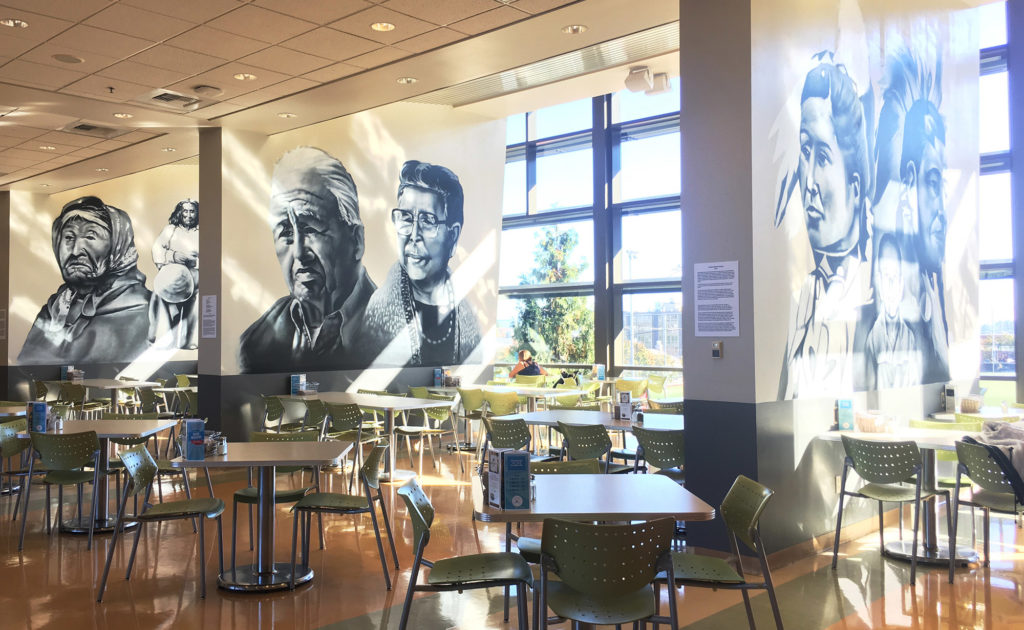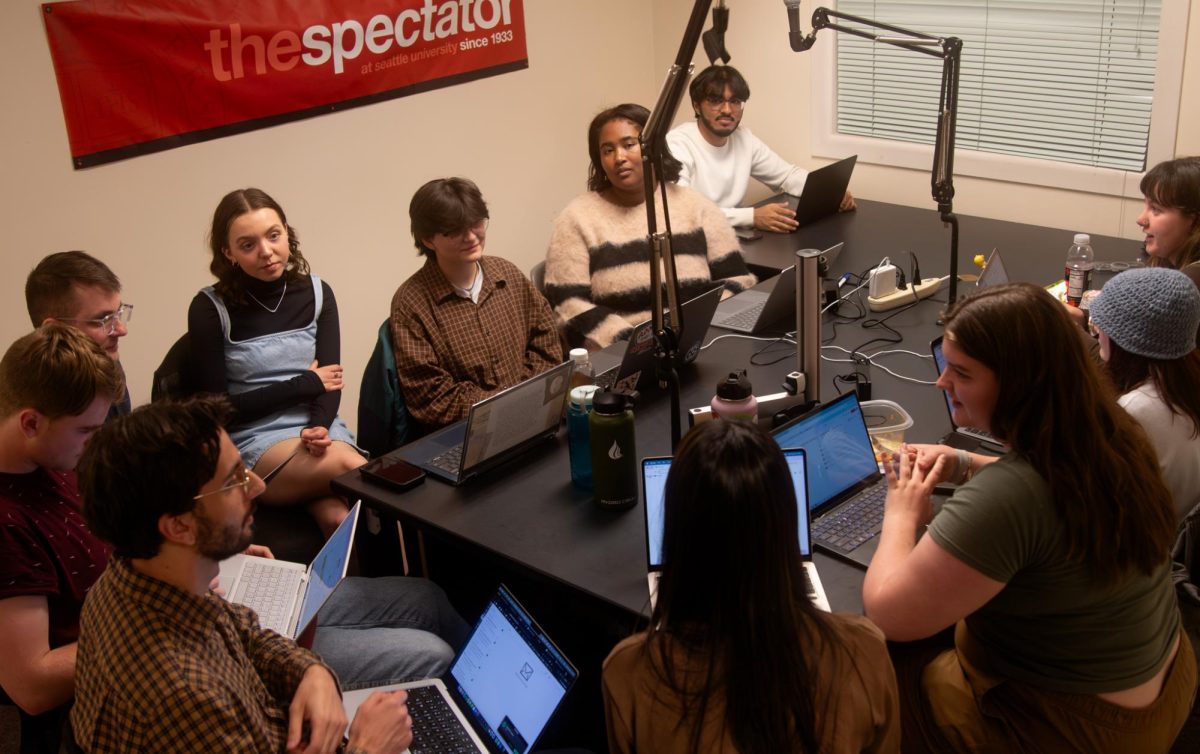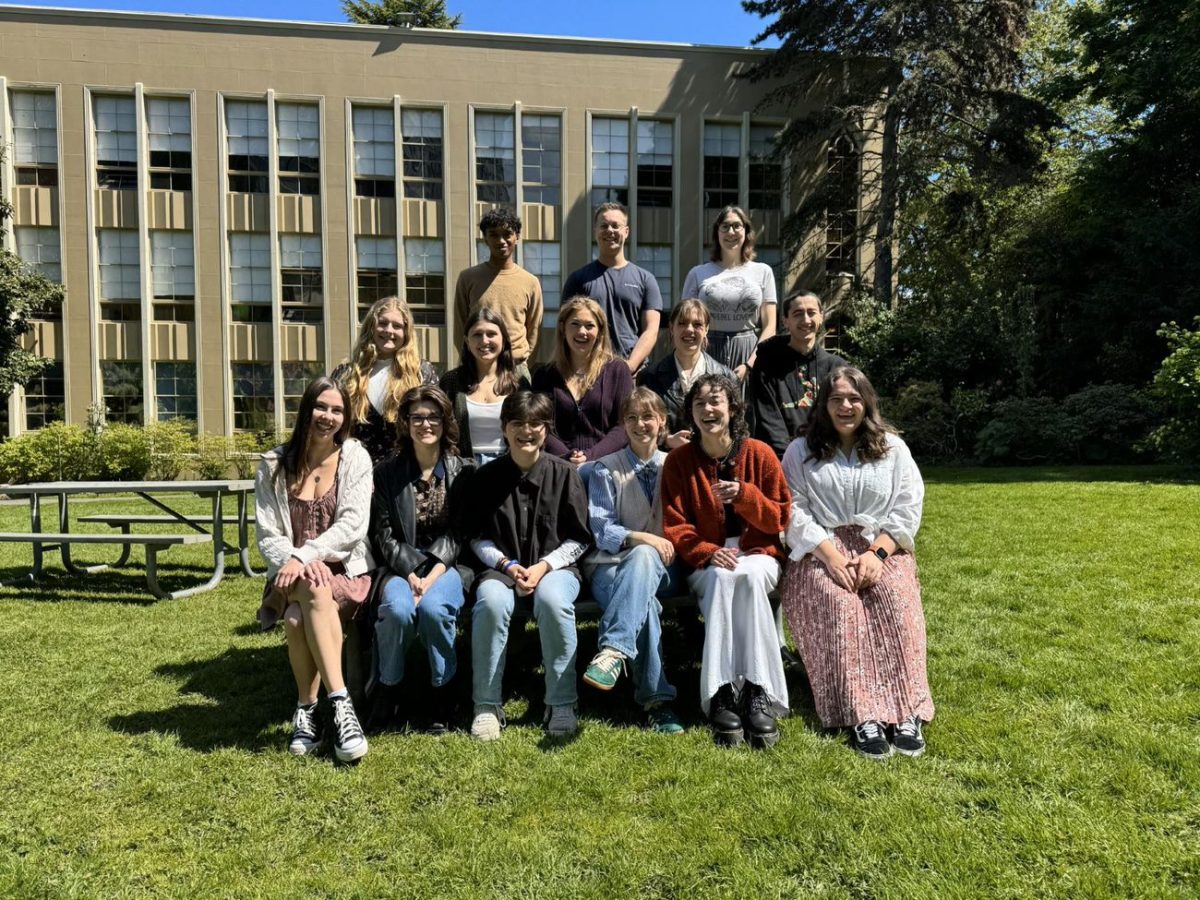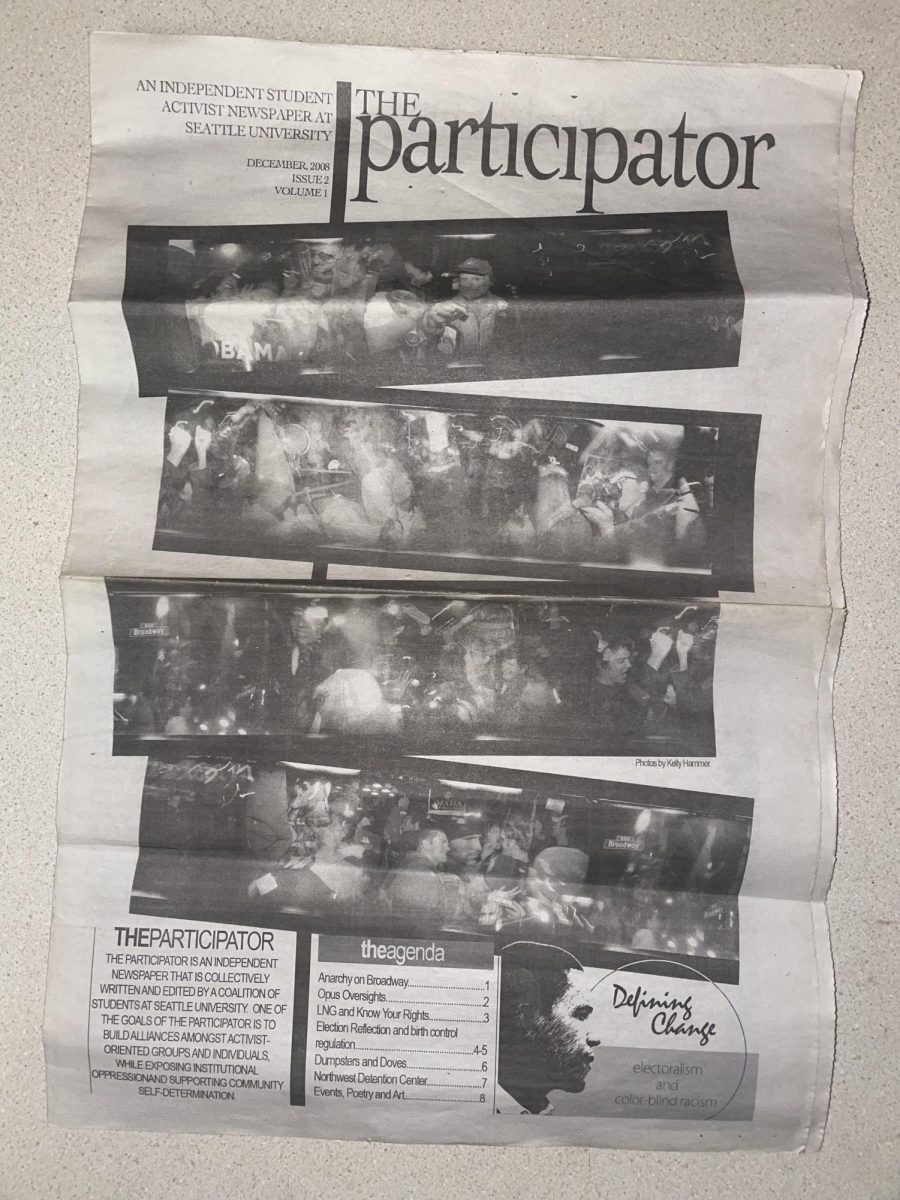Seattle University students have returned to a notably remodeled Student Center outfitted with new equipment and redesigned spaces. Even more noteworthy, however, are the murals on the second floor just outside of Cherry Street Market.

The seating area for Cherry Street Market now features several murals depicting several important historical figures.
These new additions are the work of Andrew Morrison, a local artist whose works involving Native American people and designs have been featured in schools and community centers across the country.
The project began at the end of July and was completed within three weeks. Morrison’s work celebrates Native American leaders of the Seattle area like Princess Angeline and the eponymous Chief Seattle, as well as more contemporary figures like Billy Frank Jr. and Vi Hilbert.
As detailed in the plaques that accompany the murals, the three panels that make up the artwork are each meant to present a different stage in the history of Seattle’s indigenous community. There are three periods represented in the murals: the colonial period, the recent past and a third section dedicated to future leaders. The third mural illustrates the Native American people of today, like Morrison’s nephew Sinai, as well as an unnamed man and woman Morrison observed at a powwow and felt inspired to capture in his art.
“[The murals] are meant to inspire all who see them to appreciate the local and national history of Native Americans and remind students that they continue to live and thrive here,” said Christina Roberts, Program Director of Women and Gender studies.
Roberts was among the university staff that worked in cooperation with Morrison to create the project, which itself was entirely funded by anonymous donors. She explained that this committee commissioned the work with the intent of increasing the visibility of Native American students on our campus.
The installation of these murals is meant to be part of a larger ongoing initiative organized by the university to better represent our Native American students. The committee also specifically requested Morrison to be the artist because of his involvement in the subject matter and ties to the area. Roberts described the work dynamic with the artist as very cooperative, with Morrison participating in a variety of meetings with school faculty in order to set common expectations and objectives.
Morrison also worked with Seattle U’s faculty to determine the specific location where the murals would be displayed. Roberts explained that though the Student Center was chosen for its central location, there were also other considerations that went into this decision.
Fr. Thomas Lucas, Art Curator for Seattle University, described Morrison’s bold and expansive art style as a good compliment to the wide surfaces provided by the walls of the Student Center.
In addition to the more practical reasoning behind the location, there is also a more symbolic element to the placement of these murals.
“The mural faces out to Mount Rainier, a sacred spot to the Native American people of the area,” Lucas said “It represents an opportunity to see ourselves in dialogue with the first peoples of the area.”
With its central location on campus, many students both new and returning have already had the opportunity to observe and interact with the piece, giving new life to the area.
“[The murals] really liven up a space that wasn’t entirely being utilized,” said Joseph De Los Reyes, a senior Humanities for Leadership major and Lead for the Redhawk Resource Hub Desk.
Given the Hub Desk’s position within the Student Center, De Los Reyes was able to observe Morrison’s work throughout the different stages of its development and notes that it stood out among the other renovations taking place at the time.
The Student Center is home to several student organizations and facilities in addition to the Redhawk Resource Hub, many of which serve as havens for dialogue and discussion on some of the deeper themes explored in Morrison’s work, themes like leadership, displacement, the impact of colonialism and the implications of living in a pluralist society.
“I really hope that people take the time out of their meals to go and read the plaques,” De Los Reyes said. “It’s one thing to enjoy the art and it’s another to actually understand what it represents.”
Carlos may be reached at
[email protected]












